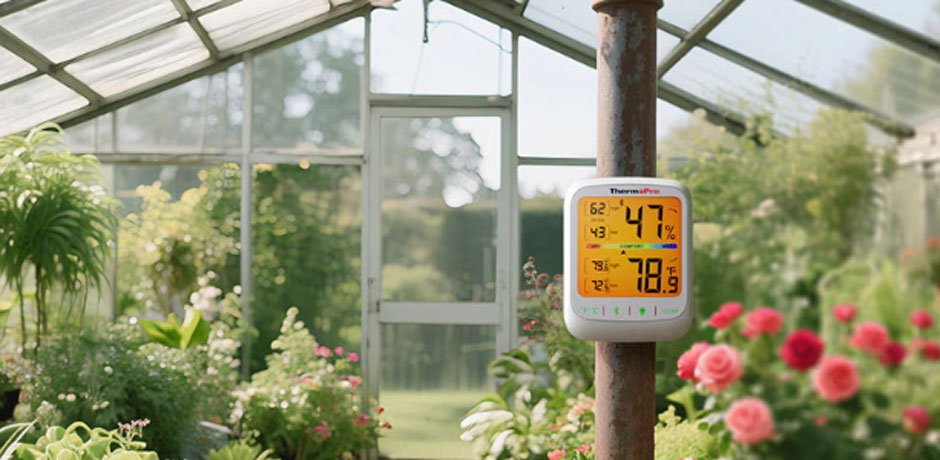Indoor gardening is more than just placing a few pots on your windowsill—it’s about creating an environment where your plants can truly thrive. One crucial factor that many indoor gardeners overlook is humidity. Just like humans, plants need the right level of moisture in the air to grow healthy leaves, strong stems, and vibrant blooms. In this guide, we’ll cover everything you need to know about maintaining healthy indoor humidity for your plants, including common problems, solutions, and indoor humidity meter to make it easy.
Why Indoor Humidity Matters
Plants are adapted to specific climates, and when grown indoors, they are often removed from their natural environment. The humidity in your home can be very different from what your plants need:
- Low humidity can cause brown leaf tips, slow growth, and wilting.
- High humidity can promote mold, mildew, and pests like fungus gnats.
Different plant types have different preferences: tropical plants like ferns and peace lilies enjoy higher humidity (50–70%), while succulents and cacti prefer lower humidity (30–40%). Understanding your plant’s needs is the first step in creating a healthy indoor garden.
Common Indoor Humidity Problems
Here are some issues indoor gardeners often face:
- Dry winter air – Heating systems can make indoor air extremely dry, especially in colder climates.
- Inconsistent humidity – Moving plants from one room to another or having multiple heat/cooling sources can create uneven conditions.
- Overwatering combined with high humidity – This can quickly lead to root rot or fungal infections.
How to Monitor Indoor Humidity
The easiest way to maintain the right humidity is to measure it regularly. A good tool is the ThermoPro TP359 Bluetooth Indoor Hygrometer Thermometer.
Why it’s helpful:
- Monitors both temperature and humidity from up to 260ft away in real-time.
- Connects via Bluetooth to your smartphone for easy tracking.
- Alerts you if conditions fall outside your plant’s preferred range.
- Compact and easy to place near your plant collection.

Using an indoor hygrometer thermometer ensures you know exactly what your plants are experiencing, rather than guessing or relying on visual cues alone.
How to Maintain Optimal Humidity for your plants
Once you know the humidity levels, there are several strategies to adjust and maintain them:
1. Group Plants Together
Placing plants close to each other creates a microclimate, where moisture released from leaves increases local humidity. This is especially effective for tropical plants.
2. Use Humidifiers
A small room humidifier can significantly boost humidity, especially during dry winter months. Look for one with adjustable settings so you can maintain the optimal level for your specific plants.
3. Pebble Trays
Place pots on a tray filled with water and pebbles. As the water evaporates, it increases humidity around the plants without wetting the soil, which is especially beneficial for those practicing organic plant care.
4. Mist the Leaves
Occasional leaf misting can temporarily increase humidity, but it should not replace a humidifier or proper monitoring. Over-misting can encourage fungal growth if done excessively.
5. Monitor and Adjust
Check your ThermoPro TP359 daily or weekly. If humidity is too low, try adding a humidifier or moving plants closer together. If too high, improve ventilation or move plants away from wet areas.
Tips for Different Types of Plants
- Tropical Plants – High humidity, indirect sunlight, consistently moist soil.
- Succulents and Cacti – Low humidity, bright light, allow soil to dry out between watering.
- Ferns and Mosses – Very sensitive to dry air; often need a pebble tray or room humidifier.
By pairing the right humidity with appropriate light and watering, you create an environment where your plants can thrive year-round.
Final Thoughts
Maintaining healthy indoor humidity doesn’t have to be complicated. With the right knowledge and a few simple tools, like the ThermoPro TP359 Bluetooth Indoor Hygrometer Thermometer, you can create a thriving indoor garden. Monitor your environment, make small adjustments, and watch your plants flourish with vibrant leaves and strong growth.
Remember, happy plants mean happy gardeners!
